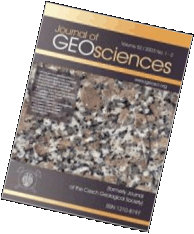 Export to Mendeley
Export to MendeleyOriginal Paper
Tectonic history of seismogenic fault structures in Central Iran
Journal of Geosciences, volume 61 (2016), issue 2, 127 - 144
DOI: http://doi.org/10.3190/jgeosci.212
In this paper, we use satellite images, field observations and aeromagnetic data to describe major tectonic features in the central portion of the Urumieh-Dokhtar Magmatic Arc (UDMA) in Central Iran. Most of the analyzed structures such as horsetail splays, rotated blocks, positive flower structures and sedimentary basins have not been previously recognized. The NW-SE-trending Zefreh Fault is the most important dextral transpressional active lineament in the area. Maps of filtered aeromagnetic anomalies confirmed that the fault also affects the basement. Based on our field observations and cross-cutting relationships, tectonic evolution of the central part of the UDMA is interpreted in terms of two main stages: (1) formation of main thrusts during shortening and exhumation of older rocks in the UDMA after Eocene-Oligocene, and (2) transpressional movements reactivating the main thrust faults to reverse-dextral strike-slip faults during the Pliocene-Quaternary. The present-day deformation of the UDMA is mostly dominated by strike-slip movements. These two stages are interpreted as reflecting a change in convergence vector between Arabian and Eurasian plates.
Webdesign inspired by aTeo. Hosted at the server of the Institute of Petrology and Structural Geology, Charles University, Prague.
ISSN: 1803-1943 (online), 1802-6222 (print)
email: jgeosci(at)jgeosci.org


IF (WoS, 2023): 1.1
5 YEAR IF (WoS, 2023): 1.5
Policy: Open Access
ISSN: 1802-6222
E-ISSN: 1803-1943